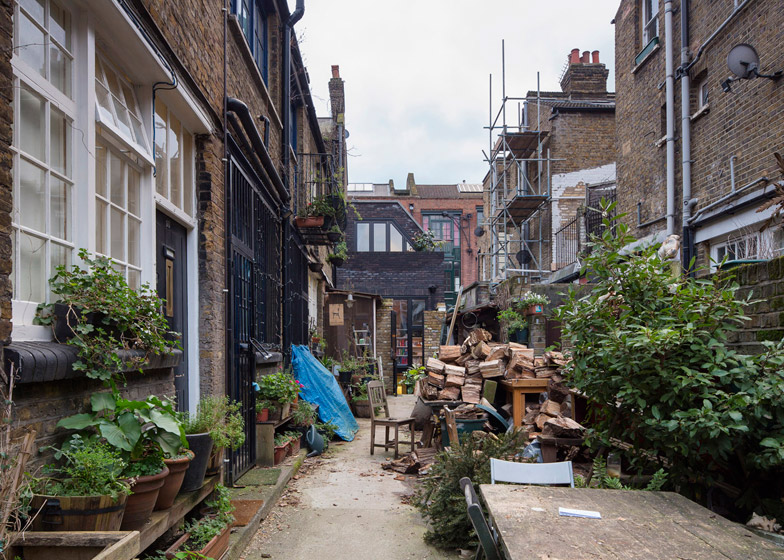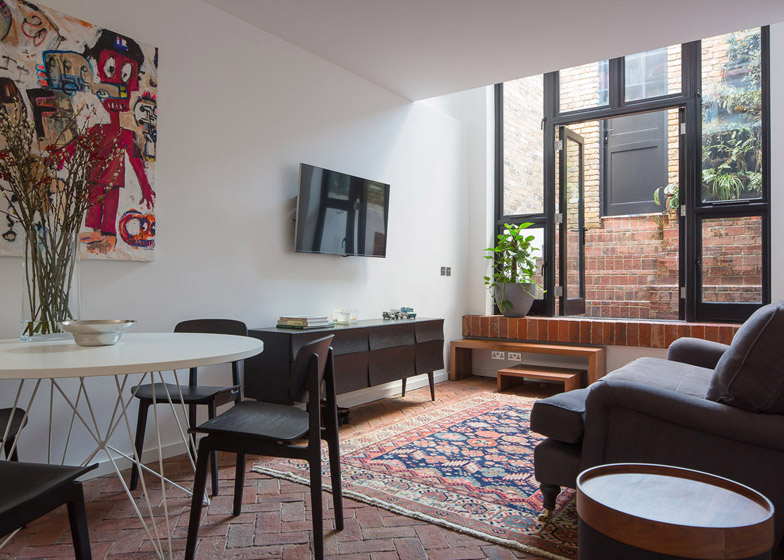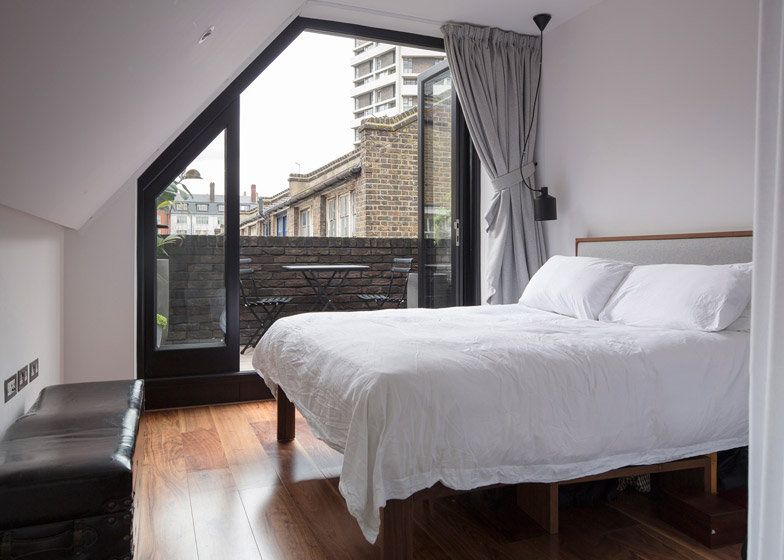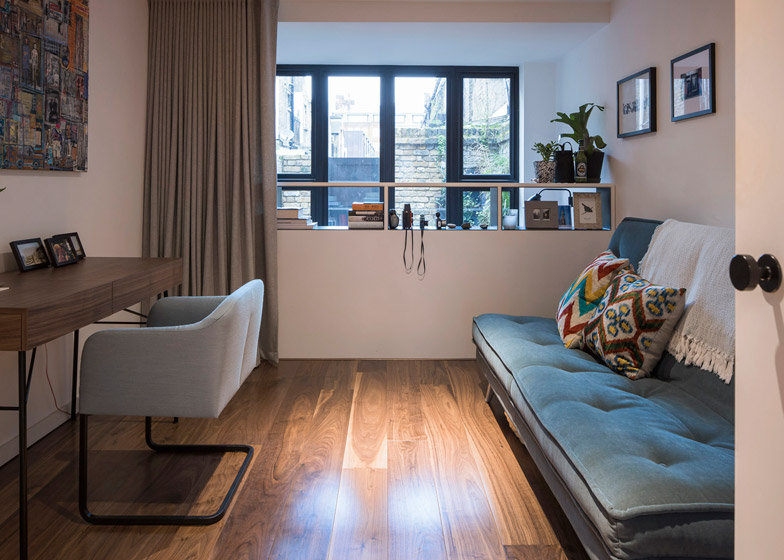London studio Kirkwood McCarthy has renovated a derelict workshop in east London to create a brick house that is tacked onto the end of a narrow mews yard (+ slideshow).
Named Winkley Workshop, the three-storey house is owned by Fiona Kirkwood of Kirkwood McCarthy and her fiancé. It extends from a typical street of brick terraced houses into a yard flanked by workshops built at the turn of the 20th century.
The dilapidated condition of the original single-storey structure, formerly used by an upholsterer, led the duo to demolish and replace it with a taller building that is designed to maximise internal and external space on the 3.9- by 9-metre site.
"As two Australians living in London, we wanted the house to allow us a casual and social lifestyle with good interaction to the outside," Kirkwood told Dezeen.
"This influenced decisions such as the brick floors from the basement to courtyard, where the entire basement level feels like an extension of the garden."
The house's exterior responds to regulations imposed by its location within a conservation area.
Traditional materials, including a red brick frontage, were paired with sash windows, stone lintels, sills and coping stones. A darker brick added at the rear matches the colour of the neighbouring houses.
The amount of space and money available for the project informed its compact scale and basic internal material palette.
A sloped roof above the new second storey prevents it overshadowing its neighbours, while a basement level was dug out to create a small courtyard.
"Although we were on a tight budget, the property needed to be timeless, well presented and functional," said Kirkwood.
"This was achieved by balancing simple and affordable finishes with functional and beautiful bespoke joinery and metal stairs."
Maintaining a sense of spaciousness within the narrow building was another important aspect of the design. A staggered internal arrangement creates double-height rooms, as well as routes for daylight to filter from the front to the rear.
"The initial concept of stepping the floors was to avoid the basement feeling underground," Kirkwood explained. "We wanted to achieve good external connectivity, daylight access to the street and the rear mews yard, and internal interconnection between the stacked floorplates."
Incorporated within the changes in level are various opportunities for casual seating that make the most of the available space, including a step next to the door leading to the rear patio and perches built into the brick steps outside.
From the entrance, a walnut stair descends to the kitchen and living area on the lower ground floor. This space features a herringbone brick floor that connects it visually with the patio.
A double-height void in front of the glazed rear facade allows natural light to enter both the living space and a multi-purpose room on the upper ground floor.
A range of windows and doors incorporated into the black-painted timber framework can be used to vary ventilation throughout the year, while low-level openings allow the owner's dogs to access the courtyard.
The materials used for staircases connecting the different levels respond to their location and function.
The steps leading from the entrance to the upper ground floor are made from perforated metal to allow sunlight entering the street-facing window to reach the basement, while also acting as a privacy screen.
The staircase that descends to the kitchen is flanked by the original party wall. This is left exposed to show the section of the old red brick structure transitioning to a concrete infill indicating the former roofline, and finally the yellow stock that was once exposed to the elements.
The stairs leading to the bedroom on the top floor are made from folded plate metal to create a layer of visual and acoustic insulation that enhances the privacy of this space.
The bedroom and en-suite bathroom are connected to a small balcony by a window incorporating folding doors that follows the angular shape of the roof.







